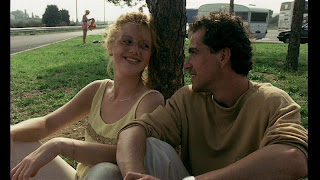O' Henry, one of the most prolific and celebrated short story writers of all time gained entrance into the glitzy world of Bollywood, courtesy Rituparno Ghosh's maiden Hindi directorial venture Raincoat (2004).
Based on one of the master's most popular short stories, 'Gift of the Magi', Raincoat deals primarily with two characters—Manu (Ajay Devgan) and Neeru (Aishwarya Rai). Once engaged, now estranged, they meet after a long period of separation at a time when both are undergoing emotional crises.
What emerges is a tête-à-tête that lasts for the major part of an afternoon and the lion's share of the 117-minute running time of the film.
A curtain of rain separates the couple from the rest of the world. Confined within the four walls of a room in a house in south Calcutta
The film encapsulates the maxim that true love is all about selflessness, sacrifice, and sentiment. It is also about putting on a façade. That is precisely where the implication of the eponymous raincoat comes in.
Protected from the torrential rain, Manu enters the now married Neeru's world wearing a raincoat. He takes it off after he enters her home, but soon finds out that he has to wear a garb to face the harsh realities that stare him in the eye. Neeru realizes the same. The film is all about the mental makeup that we put on when faced with a reality that makes the heart grow fonder about the dreams that one once cherished and wished would one day be realized.
In the consumerist society we live in, the kind of emotion that Manu and Neeru have for each other is antiquated, and is amplified by the mise-en-scène of the room, filled with old clocks, ancient furniture, and similar bric-a-brac. It is as if both the characters are in a time warp, lamenting a past that they treasure, and a future that is as bleak as the weather outside.
It is a story-within-a-story format that Ghosh
has implemented, but with little success. Considered by many as the
best screenplay writer to have emerged from Bengal after Satyajit Ray,
this is precisely where Ghosh falters in this venture. For a film that
is solely dependent on dialogues, this is one department where Raincoat fails miserably.
What could have emerged as an illustration of
connotation is ultimately relegated to banality that at times
precariously teeters on the verge of being branded inane. The spine of a
screenplay is conflict, creation of tension, which keeps the viewer
engrossed in the goings-on—aspects that are conspicuous by their
absence in Raincoat.
With the single room setting a la Hitchcock's Rope, two-character interaction reminiscent of Gus Van Sant's Gerry,
Raincoat had a lot of potential in it. Deft art direction, mellifluous
melodies—which, for once, do not hinder the progress of the film—and
able performances by the two protagonists make one feel even sadder for
the opportunity that has gone a-begging.
One emerges out of the theatre after watching
the film imagining what it could have been, rather than what it
actually is. Add to all this a poster of Sophia Loren that the camera
lingers on for quite sometime brings to one's mind Vittorio de Sica's
Sunflower starring the legendary actress—a film that dealt similarly
with unrequited love, but succeeded in eliciting a sigh of despair in a
context diametrically opposite to that of Raincoat!






























